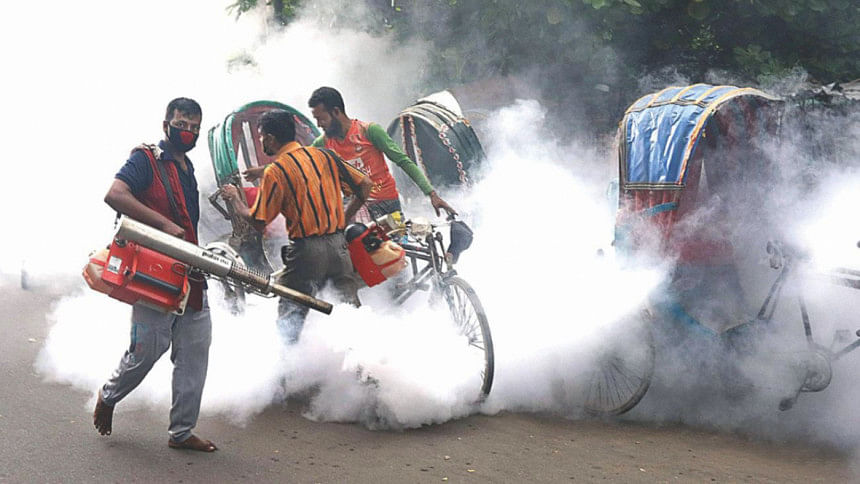Urban Health Department must be strengthened

Very recently city dwellers of Dhaka were in great crisis and had to pay enough money out of their own pocket to get recovery from a viral disease — Chikungunya. For the last few months, public at large of Dhaka North and South City Corporations were severely affected by chikungunya so adversely that turned to be an epidemic and the High Court of Judicature at Dhaka had to issue a rule nisi to make authorities responsible and brought to the book for their indifference.
Due to chikungunya, huge numbers of city dwellers were sick with high fever, muscle pains, headache, nausea, fatigue, rash and total debilitating joint pains making a patient totally incapable of discharging his normal duties. Initially, city health department did not come out with mosquito killing or opening emergency outlets and arranging any media campaign to make the public aware of getting remedy from such debacle.
The health department is fully aware that Aedes Aegypti mosquito is the carrier of both chikungunya and dengue haemorrhagic fever but did not take adequate step to control them by larviciding and fogging at least to demonstrate their good wishes and build awareness among city dwellers.
Social media started to highly accuse the mayors, health department and the government to become so unconcerned to public health. Municipal concept developed to look after the health of city dwellers with sanitation and solid waste management and provide lighting and road safety of city dwellers.
These are distinct and visible areas of our weakness in urban health care delivery system although we propagate about our capability to overcome any challenge and emerge as role model. Government health departments and city health units are not prepared enough to make any rapid response to tackle or deliver remedies quickly to people until they spend enough money from their own pocket.
The Institute of Epidemiology, Disease Control and Research (IEDCR) failed to issue any public alertness about such vector borne diseases and they are not serious about water borne diseases to give advises to city health departments and public at large. Of late, IEDCR in a newsletter stated that 519 cases were detected in their laboratory and 30 to 35 people contacted this disease every day.
Local Government Division with its 11 city corporations and 327 municipalities must take steps to make their urban local bodies capable of responding rapidly by strengthening their health departments with sufficient skilled manpower and budget allocations for public health and primary health care so that they can discharge their responsibilities as provided under the Local Government Act, 2009.
The writer is a former advisor to the caretaker government. E-mail: [email protected]

 For all latest news, follow The Daily Star's Google News channel.
For all latest news, follow The Daily Star's Google News channel. 



Comments